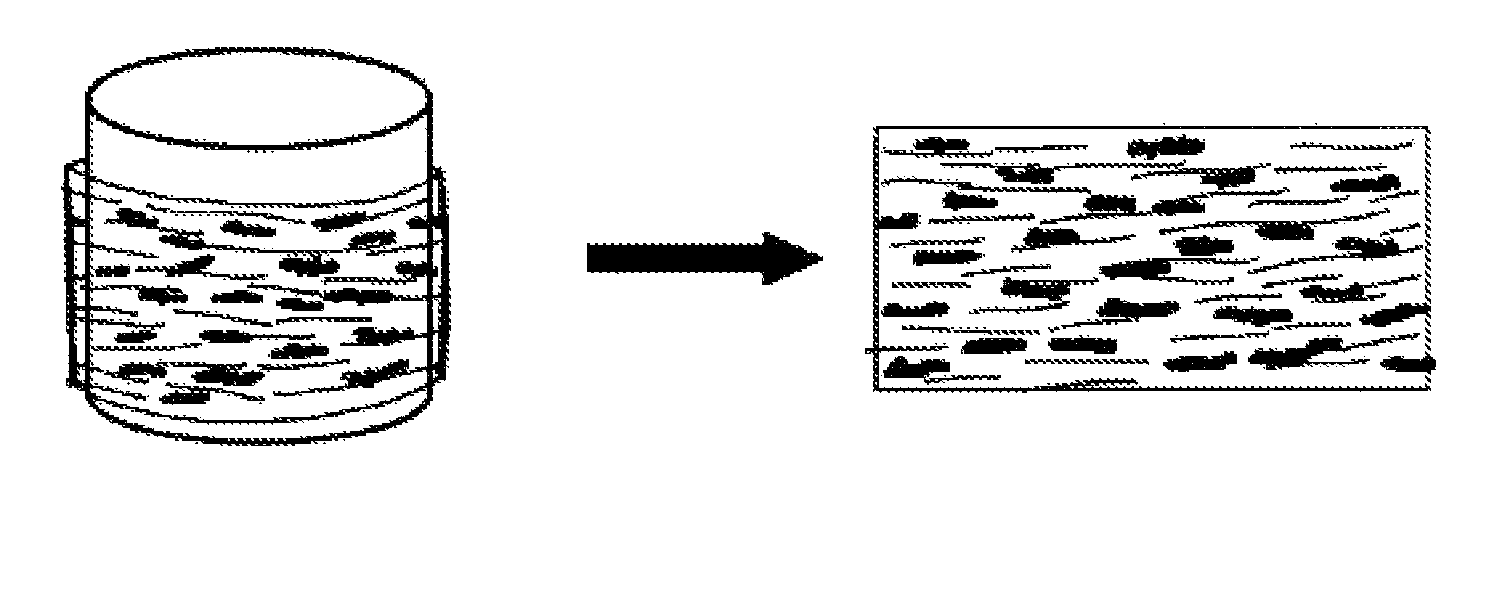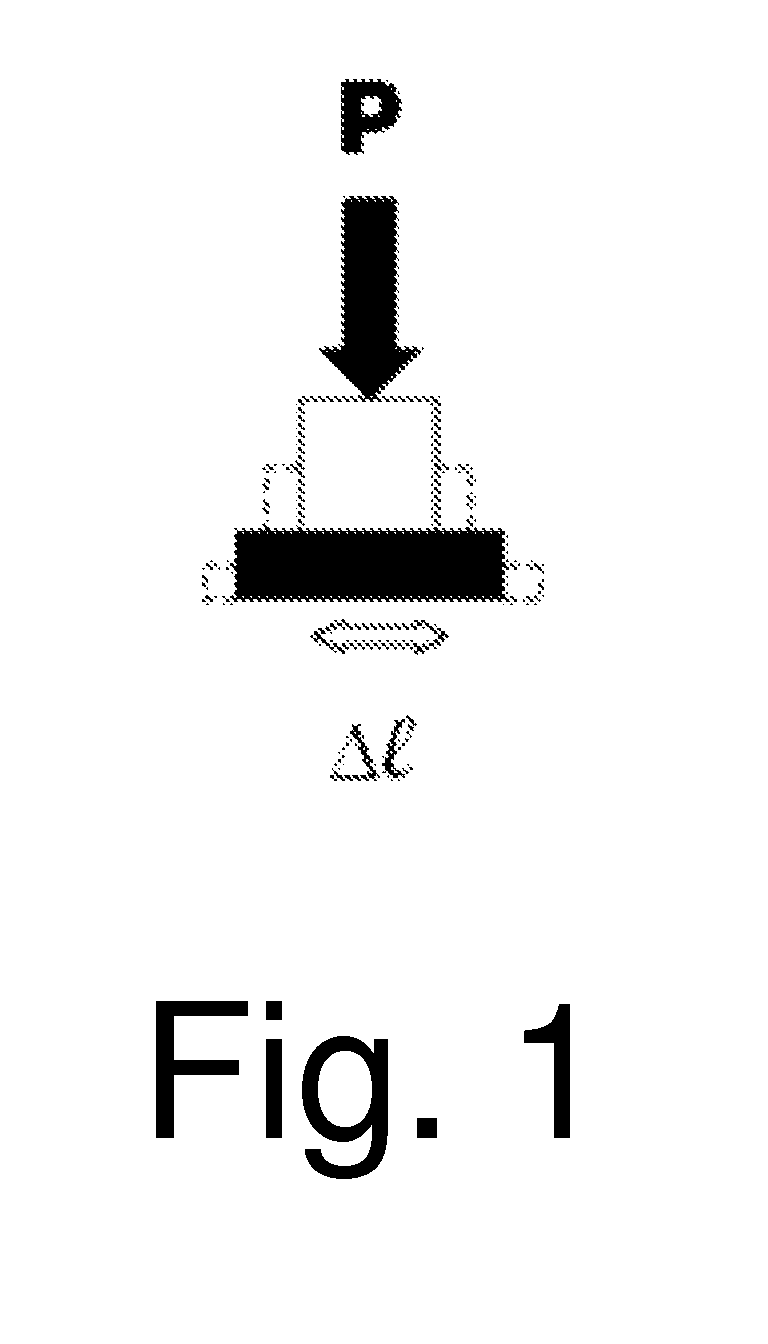Method for aligning cells and applying homogenous strain throughout deformable engineered tissue constructs
a cell-encapsulated, deformation-resistant technology, applied in the field of tissue engineering, can solve the problems of brittle cell-delivery constructs that cannot recover from elastic deformation, cells delivered with brittle cell-delivery constructs will not experience dynamic mechanical tensile loading, and negatively affect cell viability and maintenance phenotyp
- Summary
- Abstract
- Description
- Claims
- Application Information
AI Technical Summary
Benefits of technology
Problems solved by technology
Method used
Image
Examples
example 1
3% Alginate Gel Formed in a Cylindrical Shell about a Central Silicone Cylinder
[0019]A 3% alginate gel containing encapsulated cells was constituted around a deformable silicone cylinder. By vertically compressing the cylinder, the cylinder circumference increased by 5%. This 5% increase in circumference was translated to the surrounding alginate; reflective markers were embedded in the alginate and displacement was measured upon applying strain to the gel. The 6.8+ / −3.2% (Mean+ / −S.D.) strain measured using the embedded reflective markers of corroborated the theoretical 5% strain within the alginate upon compression of the silicone cylinder. The data also supported a uniform strain distribution.
example 2
4 mg / mL Type-I Collagen Gel Formed in a Cylindrical Shell about a Central Silicone Cylinder
[0020]A 4 mg / mL type-I collagen gel from rat tail tendon was formed in a torus about a deformable silicone cylinder. By vertically compressing the cylinder, a 5% increase in the cylinder circumference results. This 5% increase in circumference was translated to the surrounding type-I collagen; reflective markers were embedded in the collagen and displacement was measured upon applying strain to the gel. The 8.1+ / −2.9% (Mean+ / −S.D.) strain measured using the embedded reflective markers corroborated the theoretical 5% strain within the collagen upon compression of the silicone cylinder. The data also supported a uniform strain distribution.
example 3
1 Million Human Mesenchymal Stem Cells per ml in 4 mg / ml Type I Collagen Gel
[0021]Human mesenchymal stem cells at passage 8 were mixed with 4 mg / ml type I collagen gel from rat tail tendon. After 48 hours, a live / dead assay consisting of calcein and ethidium homodimer stained encapsulated cells. Collagen fibrils were imaged using the method of second harmonic excitation. Cells and fibrils showed qualitative alignment under confocal microscopy.
PUM
| Property | Measurement | Unit |
|---|---|---|
| density | aaaaa | aaaaa |
| orientation angle | aaaaa | aaaaa |
| homogenous | aaaaa | aaaaa |
Abstract
Description
Claims
Application Information
 Login to View More
Login to View More - R&D
- Intellectual Property
- Life Sciences
- Materials
- Tech Scout
- Unparalleled Data Quality
- Higher Quality Content
- 60% Fewer Hallucinations
Browse by: Latest US Patents, China's latest patents, Technical Efficacy Thesaurus, Application Domain, Technology Topic, Popular Technical Reports.
© 2025 PatSnap. All rights reserved.Legal|Privacy policy|Modern Slavery Act Transparency Statement|Sitemap|About US| Contact US: help@patsnap.com



